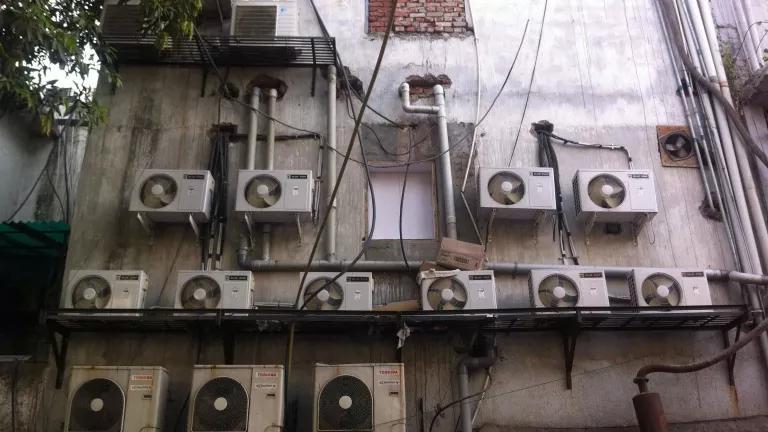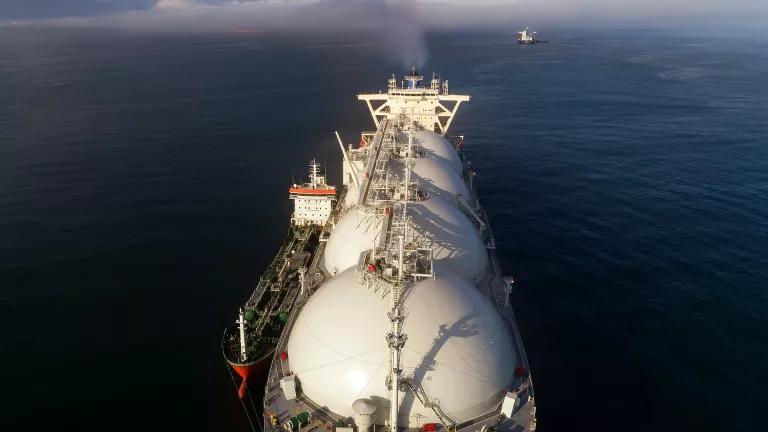Some quiet progress on climate protection is being made this week in the home city of Montreal Protocol, the world’s most successful example of environmental cooperation. In addition to saving the ozone layer, the Montreal treaty has already provided huge climate benefits because many ozone-depleting chemicals are also super greenhouse gases. Phasing out the ozone-destroying chlorofluorocarbons (CFCs) worldwide delivered a climate protection bonus equivalent to 11 billion tons of CO2 reductions in 2010 alone – more than five times the emission reductions provided in 2010 by the Kyoto Protocol. (See here and here for more details.)
For several years, the Montreal Protocol parties have been considering additional measures to further protect the climate from the chemicals replacing CFCs and other ozone-depleting chemicals. Several countries, including the United States, have reintroduced proposals to phase down the production of the CFC replacements known as hydrofluorocarbons (HFCs). The rapid growth of HFCs is a direct result of phasing out CFCs and related chemicals. Wisely, the Montreal treaty is written not only to eliminate the ozone-depleting chemicals, but also to ensure that replacement chemicals don’t create new problems, such as magnifying climate change. The HFC phase-down proposals thus fit within the mandate to assure the safety of replacement chemicals.
Avoiding HFC growth and phasing current levels down could avoid an amazing amount of heat-trapping emissions -- equal to 88 billion metric tons of CO2 worldwide through 2050. That's equivalent to eliminating 12 times the current annual carbon pollution of the United States.
This is the third year in which HFC proposals have been advanced, by the US, Canada, and Mexico, and by Micronesia and other small island nations. In 2009 and 2010, these proposals were blocked, principally by India and China – two of the largest HFC producers and users. India and China, joined by Brazil and a handful of smaller countries, continued to oppose the HFC phase down this week in Montreal.
But underneath that apparent stand-off, there’s a lot of positive change going on. This was a new issue for most countries in 2009; even so, 41 countries joined in a declaration supporting the proposals. In 2010 that number grew to 91. The supporters are a good mix of developed and developing countries, showing that this proposal has the potential to overcome the usual divide between these two camps.
This year, India and China prevented formation of “contact group,” a formal step to begin negotiating the text of a treaty amendment. But the tactic backfired, because the parties decided instead to discuss and debate the HFC proposals in the full plenary. Four productive, lengthy discussions ensued over the four days of the meeting, involving the 140 countries present in Montreal. Lots of questions were asked and answered. Most important, the questions shifted from “why” questions (why be concerned about HFCs) – to “how to” questions (what are the alternatives, how to establish our baselines, how to finance the transition).
India and China found themselves increasingly isolated. They did not try to stop the plenary discussion, but they obviously did not like it. To its credit, China maintains a generally cooperative and non-confrontational approach in the Montreal Protocol. But after four days, China’s delegation gave a defensive speech, agreeing that HFCs need to be controlled, but arguing that discussion of the amendments was “premature.” That’s a significantly softer line than the hard “no” we’d been hearing before, and the insistence that HFC curbs should be discussed only under the climate treaties. Brazil also softened its line, expressing support for formally assessing the technical and economic feasibility of HFC alternatives in the Montreal process – one of the key steps towards adopting new control measures. And while India was vocal in its opposition, it continues to participate in a bilateral HFC task force with the U.S., which is working on a joint report on HFC alternatives.
The delegations from U.S., Canada, and Mexico vigorously and skillfully advanced their proposal this week, with major contributions from Micronesia and many helpful interventions from a wide variety of countries: Australia, Burkino Faso, Cameroon, the European Union, Egypt, Georgia, Grenada, Jordan, Lebanon, Macedonia, Morocco, Switzerland, Togo, Trinidad and Tobago, and others.
The meeting will end tomorrow with another discussion of HFCs, focusing especially on how to use the Montreal Protocol’s highly effective funding mechanism to help developing countries their reduction obligations under the proposed amendments.
The HFC amendments will be get their next airing at the annual meeting of the parties in Indonesia this November (the Montreal meeting was to prepare for that). Look for the number of supporters of phasing down HFCs to rise well above 100 countries.
India and China have some decisions to make.




